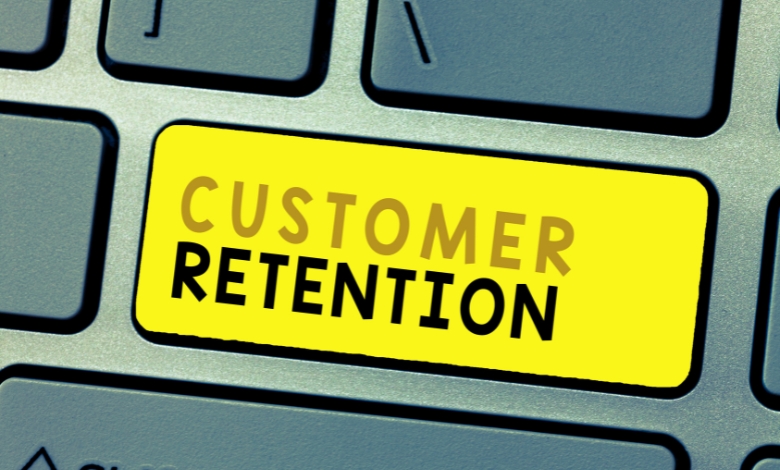Discover what is the most direct cause of customer loyalty. Hint: It’s more than satisfaction, it’s about building emotional connections.
A few years ago, I waited in a long line in an Apple store for a new iPhone to come out. It rained, my feet hurt, and I could have simply bought the phone over the web. And yet I was there, along with a dozen or so others, excited, engaged, and wanting to be part of something larger than buying a phone. That’s when it struck me: Customer loyalty isn’t about cool products. It’s about a whole lot deeper than just a firm’s business model components.
So, what most directly generates customer loyalty? Perhaps you’re thinking, “It’s customer satisfaction, isn’t it?” Not necessarily. Satisfaction is part, but not necessarily loyalty. There are numerous satisfied customers who switch when a better value comes along.
The real key? Emotional investment. Customers will become loyal when they become emotionally attached to a brand. And the best part? You can intentionally develop such devotion.
Let’s get into the psychology and science behind it.
Article Breakdown
1. The Secrets of Psychological Ownership

Did you ever notice that when you create a custom, personalized version of a product, like your own Nike shoes or your perfect Tesla on their website, then you’re much more likely to actually buy?
That’s because of a psychological principle that’s called psychological ownership. Once a person works on a thing, a feeling of ownership over it comes about in them. That’s why:
Personalized experiences generate engagement. Customers feel that the product is tailor-made for them, and hence less likely to switch brands.
User-generated content strengthens relationships. Starbucks encourages its customers to contribute new drinks, and that strengthens one’s emotional tie with a brand.
Gamification makes reward programs exciting. Sephora’s Beauty Insider rewards its members with personalized privileges, and they appreciate being valued.
Want to create such loyalty? Empower your customers with control over their experience.
2. Why Ethical Alignment Boosts Retention
Here’s a little experiment: next time you buy coffee, take a moment to check the packaging. Does it mention fair trade, sustainable farming, or ethical sourcing? If so, that’s not by accident.
More than ever, consumers care about who they buy from, not just what they buy. Studies show that 77% of consumers prefer brands that share their values. This means that companies focused on sustainability, social impact, or ethical business practices tend to see higher retention rates.
Example: Patagonia Patagonia doesn’t just sell outdoor gear; they sell a philosophy. They’ve committed to environmental conservation, even encouraging customers to repair old gear instead of buying new products. And guess what? Customers love them for it.
If you want to build loyalty, ask yourself: What does my brand stand for?
3. The Secret Sauce: Community & Social Proof
A few years ago, I bought my first Peloton bike. Sure, it was expensive. But what kept me coming back wasn’t just the product, it was the community. The Facebook groups, the leaderboards, the shared motivation, it all made me feel like I was part of something bigger than just a workout.
Humans are social creatures, and we crave belonging. Smart brands leverage this by creating strong communities where customers feel connected, not just to the brand but to each other.
Here’s how you can do it:
- Encourage user interaction. Apple has built a global community of creators and developers who support each other.
- Highlight customer success stories. Nike’s “Just Do It” campaign thrives on real stories of perseverance.
- Use exclusivity to create desire. Tesla owners get access to a private community, strengthening their connection to the brand.
If customers feel like they belong, they won’t just stay loyal, they’ll become brand ambassadors.
4. Emotional Engagement Through Storytelling
People don’t buy products; they buy stories.
Think about it: Why do we love watching brand ads during the Super Bowl? Because the best ones tell compelling stories that make us feel something.
Take Dove, for example. Their “Real Beauty” campaign wasn’t about soap; it was about empowering women. That emotional resonance created lasting customer loyalty.
Want to create that kind of connection? Follow these storytelling tips:
- Make your customers the hero. Instead of focusing on your product, highlight how it transforms their lives.
- Show vulnerability and authenticity. Share behind-the-scenes insights about your company, your struggles, and your mission.
- Use video storytelling. Video content is 12x more likely to be shared than text alone.
A good story sticks. And when your brand’s story aligns with your customers’ values, you create an emotional bond that leads to long-term loyalty.
5. Consistency Across All Touchpoints
Have you ever had a bad experience with a brand and immediately sworn off their products? One bad interaction can undo years of good ones.
Loyalty isn’t just about big, flashy campaigns, it’s about consistency. Customers need to trust that every interaction with your brand will meet their expectations.
Here’s what that looks like in practice:
- Fast, responsive customer service. Amazon’s customer support is legendary for a reason.
- Seamless experience across channels. Whether customers visit your website, app, or physical store, the experience should feel the same.
- Consistent brand messaging. If your marketing promises one thing but your product delivers another, you’ll lose trust.
Loyal customers stay when they know exactly what to expect from you.
Key Takeaways
If you want to turn one-time buyers into lifelong fans, focus on:
- Creating a sense of ownership. Let customers personalize their experience.
- Aligning with their values. Show them you care about more than just profits.
- Building a community. Make them feel like they belong.
- Using storytelling. Make them feel something powerful.
- Being consistent. Deliver the same great experience, every single time.
Useful Articles:
- What is Personalization and How to Use It to Boost Loyalty: Explores how personalized communications can significantly enhance customer loyalty and drive revenue growth.
- Why Personalization Is The Holy Grail Of Loyalty: Discusses how personalization fosters long-term relationships and deeper engagement with loyalty program members.
- Ethical brands boost customer loyalty (and satisfaction): Highlights how ethical behavior by brands strengthens customer loyalty and encourages positive brand conversations.
- 4 Ways to Foster Customer Loyalty With Ethical Business Practices: Shares actionable insights on how transparency, fair pricing, and honesty build trust and loyalty.



